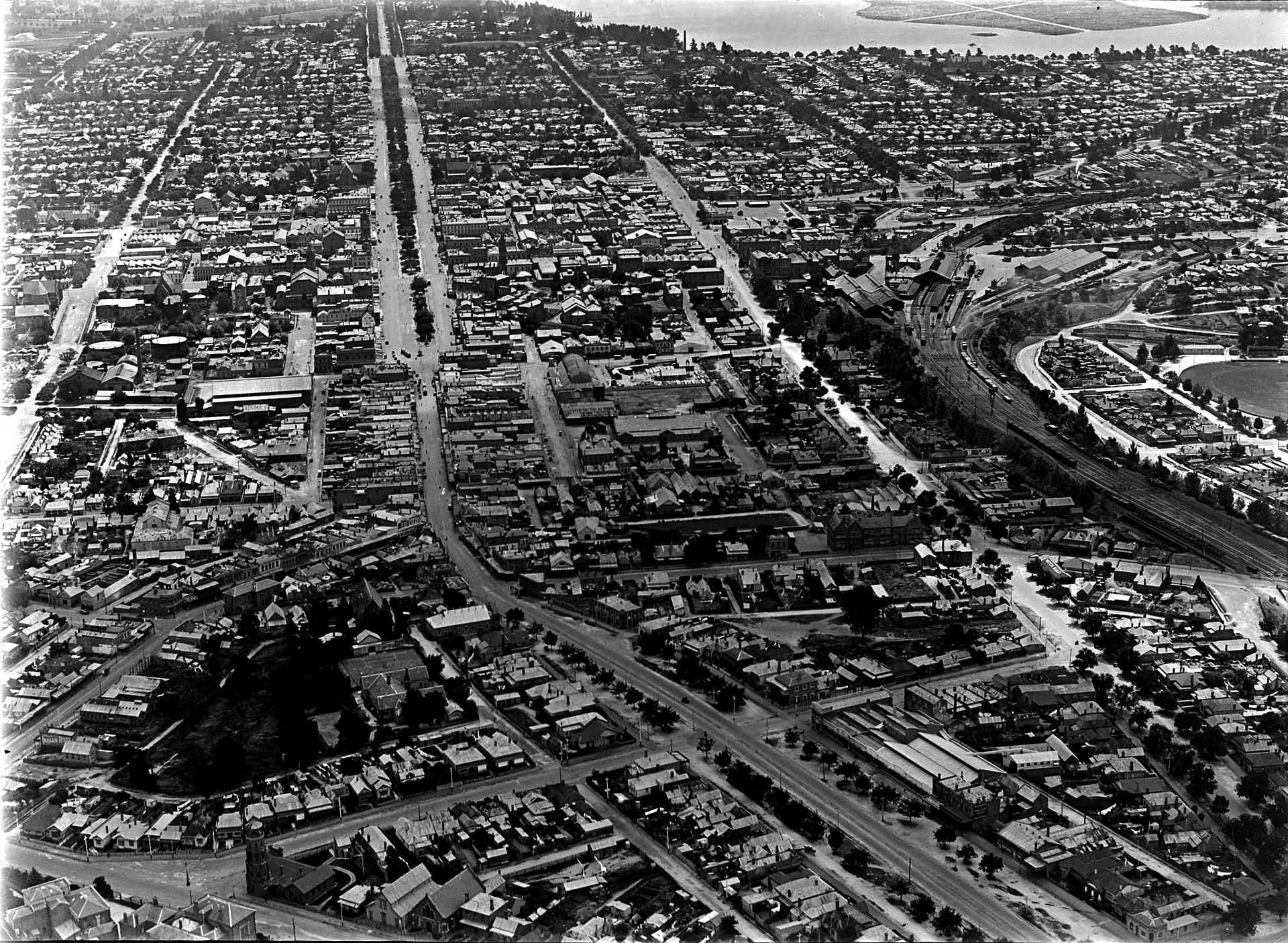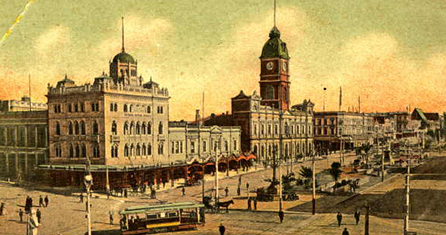I am a local government authority
(Source: State Library of Victoria)
 HUL Toolkit
HUL Toolkit
I am a local government authority
If you are considering implementing UNESCO’s Historic Urban Landscapes (HUL) approach in your local government, you may wish to adapt the following timeline and tools for your context. This approach creates a base for sustainable city management and development, but is designed to be flexible in how it responds to changes in local values or political imperatives over time. Depending on your circumstance, the order of the steps may differ.
Using this framework builds a foundation for managing change in a deliberate way, rather than reacting to changing priorities as they occur.
To find out more about how the City of Ballarat has used the HUL approach watch the short video or contact the HUL focal point
HUL Step 1: Map the city's evolution and performance
-
Collect existing mapping data from currently available sources and establish an open data platform like Visualising Ballarat
-
Identify other stakeholders who can input further layers of data
-
Commission custom research to map changes over time and measure the city’s performance for liveability, sustainabilty, walkability and inclusiveness of all people and abilities
-
Invest in other ways of mapping the city’s distinctive identity, culture and values. Explore Ballarat examples here
HUL Step 2: Uncover local values
-
Invite the community to tell you what they love, what they would like to see change and what they want to keep about life in your city, as we did through Ballarat Imagine. See our first round of results
-
Consider making these mechanisms ongoing to allow for continuing community participation
-
Review data collection processes to ensure as many different sections of the community are included
HUL Step 3: Assess reslience and risks
-
Once the data on context and values has been collected and key elements have been identified, conduct a vulnerability assessment to:
-
Identify the risks to these elements
-
Rank them, and
-
Strategies to manage them
-
The elements identified in the assessment will become a checklist of key considerations for any future initiative, project of development
-
HUL Step 4: Integrate values into strategy
-
Formalise the use of the data collected into the development of strategies, plans and policies
-
Use participatory planning approaches to identify significant factors for inclusion in Local Area Plans
-
Use collected data to inform service planning
-
Build your staff capacity in HUL:
-
Add HUL training into staff inductions
-
Incorporate the HUL approach into position descriptions
-
Run regular professional development sessions on the findings of your HUL tools (also the IPA2 engagement framework)
-
Assess the use of the HUL principles when conducting project and performance reviews
-
Embed implementation of the HUL approach in executive performance indicators and report regularly
-
HUL Step 5: Priorities
-
Commit to a rollout plan and stick to it
-
Conduct regular internal project reviews to assess the implementation
-
Develop and embed your priorities – review internal procedures and embed in day to day procedures
HUL Step 6: Establish partnership and management frameworks
-
Identify partners (private and public organisations and institutions) within the community and how they can contribute and participate in the implementation of the priority actions
-
Commit to reporting mechanisms to ensure transparency and accountability
-
Provide guidance on how stakeholders should be engaging with the HUL processes and performance expectations
-
Regularly measure the impact
Connect
Through our role as a leading HUL pilot city the City of Ballarat and our project partners are committed to assisting other local governments interested in the HUL approach. If you would like to find out more about Ballarat’s experience the City of Ballarat’s Heritage and Cultural Landscapes team can help. Contact them directly on heritage@ballarat.vic.gov.au or call +61 3 5320 5500
Find out more about the global communities work with the HUL with the Global Observatory on HUL (GO-HUL), the global HUL pilot and at UNESCO
(Steps 1 - 6 adapted from the UNESCO Recommendation on the Historic Urban Landscape six critical steps)







.jpg)
